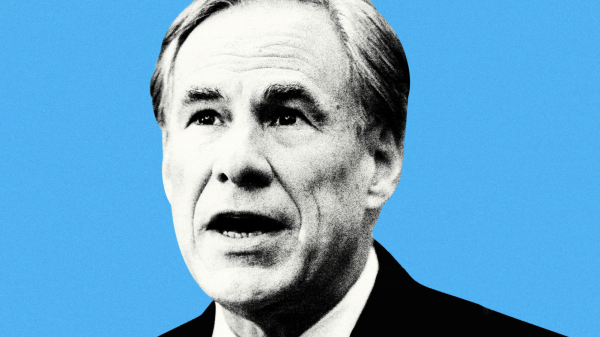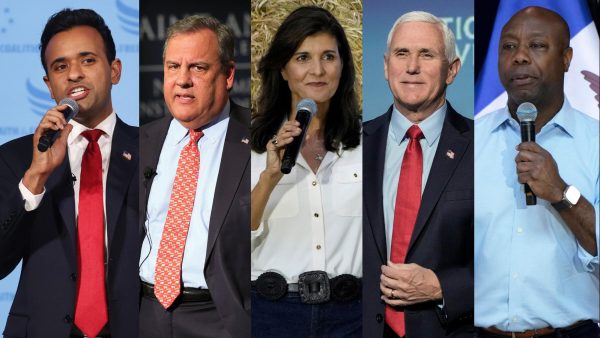Exploring America’s Coronavirus Response
January 11, 2021
On December 31st, 2019, while the world was busy yelling “Happy New Year” and celebrating the beginning of a new decade, the U.S. CDC became aware of a cluster of virus cases in China. These would soon be identified as the first of nearly 40 million cases of COVID-19, a disease that has since ravaged the world. Since then, over ten months have passed, and no clear end to the pandemic is in sight. The virus has hit the hardest in America, whose people have suffered over 8 million cases and 200,000 deaths. The U.S. leads the world in COVID-19 infections, and many are left to wonder how this happened. How did America, the nation seemingly most prepared to handle such an outbreak, end up completely devastated by its effects?
The answer to this question goes back to the very beginning of what is now a global pandemic. Though the first cases in China popped up late last year, it was not until January 3rd that America’s CDC director, Robert Redfield, received a notification that a new respiratory disease had been identified in Wuhan, China. Both the CDC and various spy agencies soon alerted the White House to the threat, and the topic came up in the president’s briefings. On January 21st, the first U.S. case was confirmed. Just ten days later, the World Health Organization declared a global health emergency for only the sixth time in history. On March 13th, two days after the World Health Organization declared the virus a pandemic, President Trump declared it a national emergency and placed a travel ban on Europe.
Many have criticized the delay in responding to the virus, noting that it took 70 days from the initial notification for President Trump to realize the threat was no longer distant and harmless–it was now inside America, infecting thousands of American citizens. The rest of the world, particularly Italy, had already gone into lockdown and was facing the worst of the pandemic, so the U.S. had warnings of the deadliness ahead of time, along with time to prepare for it — two key advantages of which they chose not to make use.
Soon, state governments began lockdown and shelter-in-place orders, which were imperative to slowing the spread of the virus. However, they came too late. If social distancing measures had been put in place just two weeks earlier than they were, 54,000 fewer people would have lost their lives by early May. Around 83% of America’s deaths could have been avoided. If lockdowns were imposed just one week earlier, 36,000 fewer deaths would have occured. Clearly, time was of the essence, and the American government failed to take advantage of what was available to it.
Another aspect of America’s failed response to the virus was reopenings. In most states, they occurred much too early, leading to large rises in infections and deaths. Since early summer, the Trump administration had pushed and pressured states to reopen, claiming the economy could not handle the shutdowns. Many Republican governors complied and reopened, while Trump continued to pressure Democrat-led states to reopen. The Trump administration pushed schools to reopen fully as well, even threatening to cut federal funding for schools that did not open. However, places that did reopen met a huge spike in cases. Some had to shut down again, while others just stayed open, exacerbating the effects of the outbreak. Dr. Anthony Fauci commented that “in the attempt to reopen in some situations states did not abide strictly by the guidelines that the task force and the White House has put out. And others that even did abide by it, the people in the state actually were congregating in crowds and not wearing masks.” Evidently, the reopening of the country was not done well, making the national outbreak much, much worse.
It is hard to pinpoint exactly where the nation failed. One big reason many Americans now cite to defend their response is that China, where the outbreak originated, failed to provide accurate, detailed information to the rest of the world at the very beginning. China refused assistance from the U.S. CDC, which meant that the CDC could not obtain a sample of the virus, something necessary to develop tests or a vaccine. China also downplayed the virus and its effects, depriving other countries of invaluable information on the disease that would soon reach their shores.
While this is certainly a valid reason for why America’s response to the pandemic was ineffective, every nation had to deal with a lack of information from China. Many of these nations were still able to implement a strong plan to control the outbreak, but not America. As mentioned previously, America lost the advantage of time due to widespread denial of the disease’s effects. Many, including the president, believed it to be a harmless threat that would simply go away. This, however, was not the case, despite recent claims by the White House to the contrary. The country closed down too late and reopened too soon, and the most prominent barrier to defeating the virus and flattening the curve was a widespread refusal to take precautions. Around the nation, statewide mask mandates were flouted and anti-mask protests were held. Many continued to participate in large parties with no social distancing or masks in sight. As the weather grew warmer, people flocked to the beach with their friends, leading to crowded and unsafe shores as well as spikes in cases. Many Americans now blame the lack of social distancing and masks for the continuing outbreak. On the other hand, 58% of adults believe the early lifting of lockdowns is at fault. Wearing a mask and complying with social distancing became political statements, and they were the largest contributors to America’s poor response.
It is clear that as a country, America is generally viewed as strong and influential in the international community. However, global perceptions of America have changed in response to its handling of this pandemic. An international study conducted by the Pew Research Center surveyed thirteen countries, including Japan, Germany, and the UK, and found that all countries ranked America’s response as the least effective. Only a median of 15% in all the countries surveyed believed that America was effective in handling the pandemic. In places like Spain and Italy, this number was closer to 20%, whereas in Denmark, it was 7%. The survey’s results supported what most doctors and scientists already knew — in controlling the spread of this virus, America was doing very poorly, contributing to its overall negative reputation worldwide.
While the international community certainly feels this way, Americans are quite divided on the issue, a divide that seems to originate from politics. Less than half of the country’s adults believe that the U.S. has done a good or excellent job in controlling the pandemic. Clearly, most people are unified in their belief that America could have controlled this pandemic better. However, a closer look at the polls show that only 27% of Democrats and left-leaning independents believe so, as opposed to 71% of Republicans and right-leaning independents. Republicans, in keeping with their president and their party’s thoughts on the pandemic, tend not to see it as a threat and to believe America has done well in its response. Democrats, however, tend to see the response as detrimental and purposely ignorant of scientific data. The pandemic has intensified the already polarizing political climate of America, just before an election. The coronavirus came up in both presidential debates, and the candidates have both been asked in several interviews and questions to discuss the issue. The pandemic is certainly important to America’s voters, but as the data demonstrates, neither Republicans nor Democrats can agree on America’s response.
https://www.wsj.com/articles/covid-comparisons-europe-and-u-s-11593381626
https://www.nytimes.com/interactive/2020/us/coronavirus-us-cases.html?auth=login-google
https://www.ajmc.com/view/a-timeline-of-covid19-developments-in-2020
https://www.nytimes.com/2020/05/20/us/coronavirus-distancing-deaths.html



Yuying Wang • Jan 19, 2021 at 7:44 am
Wow, who would’ve thought that we would be in a global pandemic! Your article was wonderfully written, and I especially liked how you explored the responses of other countries when dealing with the outbreak of the virus. Thank you for writing such a fantastic article!
Varsha Bhargava • Jan 13, 2021 at 11:20 pm
This is a really thorough and sophisticated article! It was so informative and was a great resource for me to see all of the facts in one place. I’m sure a lot of people will benefit from reading this piece. Great job!